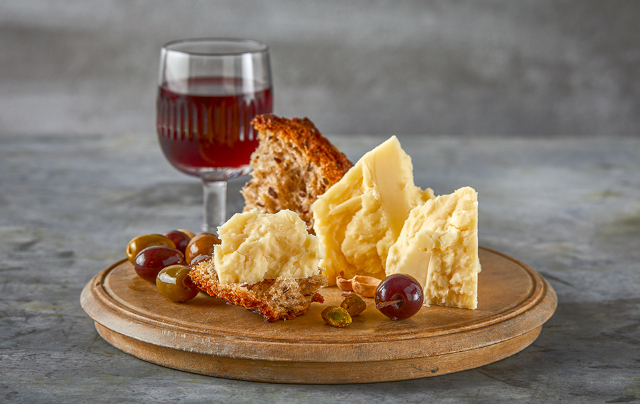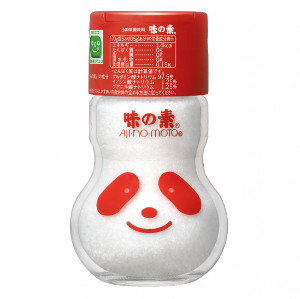I’ve been intrigued by the concept of ‘umami’ since I first heard of it a few years back. It made sense that some foods had more of it – or generated more of it – than others, and I had evolved for myself the notion that it was solely associated with complex flavours such as meats and certain veggies…
 Red Wine and Cheese: An umami-generating pairing made in heaven… But for the
Red Wine and Cheese: An umami-generating pairing made in heaven… But for the
ultimate umami-and-booze experience, try your favourite food with Sake!
But that turned out not to be the case, in practice. There was clearly more to the phenomenon than that. In fact, for me at least, some aspects of the umami experience bordered on the ‘magical’. Now, a new learned musing on the issue has uncovered an explanation that is not only comprehensive but easy to understand.
We encounter an old friend
A team from the University of Copenhagen (UoC) wanted to determine why so many recent casual, non-scientific ‘tests’ seemed to suggest that certain fermented beverages enhanced the umami experience in foods to a greater extent that others.
Specifically, a recent rash of food blog posts and claims from foodies and restaurateurs claimed that Sake, the traditional – almost legendary – Japanese Rice Wine, led the pack in the opinions of the self-appointed experts. The folks from UoC wanted to show not only that a connection truly existed between certain foods and beverages such as Sake, but that there was a specific cause-and-effect mechanism involved in the experience of umami. And it’s Asian Foods with which we most closely associate the effects of glutamate *.
What they did
“We already know about food combinations which pair happily — like ham and cheese, for example,” says Post Doctoral Researcher, Study Co-Author Dr. Charlotte Vinther Schmidt. “Therefore, we calculated the effects of pairing shellfish like oysters, shrimp and scallops with the various beverages, so as to investigate which combinations would synergize and provoke an emergence of umami.”
What they found
What’s more, the team consulted colleagues in UoC’s ‘savoury-deliciousness’ experts to confirm that that the flavour can be provoked by pairing. Vinther Schmidt says her team found that, the higher the content of glutamate in a beverage, the more umami it elicited in foods with which it was paired, and they set out to measure how much umami certain pairings would produce.
“Here, we conclude that each of the beverage classes studied elicit an umami flavour when paired with oysters and tuna. Furthermore, sake, certain aged wines and champagne can also exhibit umami flavour when paired with scallops,” explains Vinther Schmidt.
According to an abstract of the Stuy report: “This is because pairing high-content glutamate drinks with foods high in ribonucleotides (RNA’s building blocks), catalyzes a synergistic flavour magic through which the best qualities of both drink and food emerge. […] If one takes a drink with glutamate and a food with just as many ribonucleotides, the umami flavour can generally be multiplied by eight.”
As a result, researchers came up with the following scale of umami strength in a range of beverages. Average umami flavour content in selected beverages:
(The researchers studied 8 sakes, 9 types of white, rosé and sparkling wines, 9 champagnes and 5 types of beer. Here is the average umami content for each beverage class.)
- Sake = 20.1
- Beer = 5.7
- Champagne = 4.2
- Wines = 3.5
The takeaway
“If we can understand which vegetables, that together with selected beverages, provide the best taste — that umami contributes to — we could probably get far more people to consume vegetables, which is healthy for us humans, as well as for our planet,” Vinther Schmidt concludes: “Although there are other factors that contribute to taste experiences, like mouthfeel and smell, it might be a good idea to buy beverages with a high concentration of umami, as they improve the chance of enhancing taste in high-ribonucleotide foods, thus resulting in the delightful savoury-deliciousness of umami.”
My take
Now, there’s a clear explanation of hoe glutamate and umami work together! Explains for me everything I wanted to know. Now, go Google those recent posts you’ve seen but passed over until now, about ‘The best beverage to pair with Lobster’ and so on, armed with the confidence that you’ll understand what the ‘experts’ are talking about.
And remember that employing a little glutamate (in whatever form) may also be just what your COVID-19 lock down meals need to elevate them above the growing ‘sameness’ that time, familiarity and repetition have burdened them with!
* Glutamate
Remember our reference to glutamate? Check back on this ‘legacy’ post for a refresher…
~ Maggie J.

